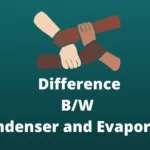The Ramjet and Scramjet engines compress air and drive themselves using their own speed. The ramjet engine technology is used in a wide range of applications, including missiles, supersonic aircraft, and artillery rounds, whereas scramjet engines are still in their early stages of development.
Are you interested in learning more about the Difference Between Ramjet and Scramjet? Then you’ve come to the proper place; down the road, you’ll find the same.
So, without further ado, let’s get this party started.
Let’s start with the fundamentals first…
Ramjet-
The ramjet is an air-breathing jet engine that compresses incoming air using the engine’s forward motion rather than the rotary compressor used in most jet engines. It is also known as stovepipe jet.
Subsonic combustion takes place in the combustion chamber. At the inlet, oblique shock is used to reduce the flow to subsonic speeds.
In contrast to traditional turbojet engines, which compress the air through the compressor section, ramjets operate by subsonic combustion of fuel in a stream of air compressed by the forward speed of the aircraft itself. Ramjets do not have any moving parts, unlike turbojets.

A compressor, combustion chamber, and exhaust nozzle are all part of a Ramjet’s engine. A ramjet, unlike conventional jet engines, cannot operate at zero thrust.
As the plane reaches supersonic speed, the air entering the ramjet from the inlet is squeezed by the compressor as the pressure in the ramjet tube rises.
As the pressure inside the tube and the ambient pressure equalise, the compressed air slows down and is fed into the combustion chamber.
As the temperature rises, the compressed air and hot gases try to escape, but the ramjet’s walls prevent them from expanding, causing the air and hot gases to swiftly exit the ramjet through the Exhaust.
Consider Also: 25 Differences between Two Stroke and Four Stroke Engine
Scramjet-
A scramjet is a type of ramjet airbreathing jet engine where combustion occurs in supersonic airflow.
A scramjet, like a ramjet, relies on high vehicle speed to compress the incoming air forcefully before combustion, but unlike a ramjet, which uses shock cones to decelerate the air to subsonic velocities before combustion, a scramjet uses shockwaves produced by its ignition source to slow the airflow.
This enables the scramjet to run at extremely high speeds while being efficient.

Scramjets can function at hypersonic speeds because supersonic flow causes more reactivity; a scramjet’s theoretical top speed is between Mach 12 and Mach 24, and the fastest air-breathing aircraft uses Scramjet engines.
Scramjet is a more advanced variant of Ramjet. It functions in the same way as Ramjet, with the exception that the flow decelerates slightly as it passes through the inlet, increasing the temperature and pressure while maintaining supersonic velocity.
Scramjets are superior to rockets because they do not require large amounts of fuel and oxidizer.

Difference Between Ramjet and Scramjet-
- A scramjet is a ramjet with supersonic combustion. In ordinary ramjets, the air is decelerated to subsonic velocities before combustion, but this is not the case in a scramjet.
- Ramjets have a velocity range of 1 to 6 Mach in theory, but Scramjets have a range of 12 to 24 Mach in theory.
- Because ramjets and scramjets can’t produce thrust at zero velocity, they need a lot of airflows to start started.
- Scramjets have a higher specific impulse than Ramjet.
- Owing to subsonic combustion, Ramjet has greater efficiency and operability than Scramjet, which has a lesser efficiency due to supersonic combustion.
Read Also: Difference between Jet condenser and Surface condenser
Wrapping Up-
For the time being, that’s all I have to say about the subject. I hope you enjoyed the Difference Between Ramjet and Scramjet. If that’s the case, please tell your friends and family.
Engineers Rail should be added to your bookmarks for future reference.
Here are some additional differences that you might find interesting:
10 Differences between Laminar and Turbulent Flow
RANKINE CYCLE VS BRAYTON CYCLE: What’s the Difference
CAMSHAFT VS CRANKSHAFT: All you need to know

Abhishek Tiwary is a blogger by passion and a Quality Engineer by profession. He completed his B.Tech degree in the year 2017. Now working in a reputed firm. He loves to share his knowledge with others.

![Difference between Orificemeter and Venturimeter [With PDF] Difference between Orificemeter and Venturimeter [With PDF]](https://www.engineersrail.com/wp-content/uploads/2021/09/difference-between-orificemeter-and-venturimeter-150x150.webp)

